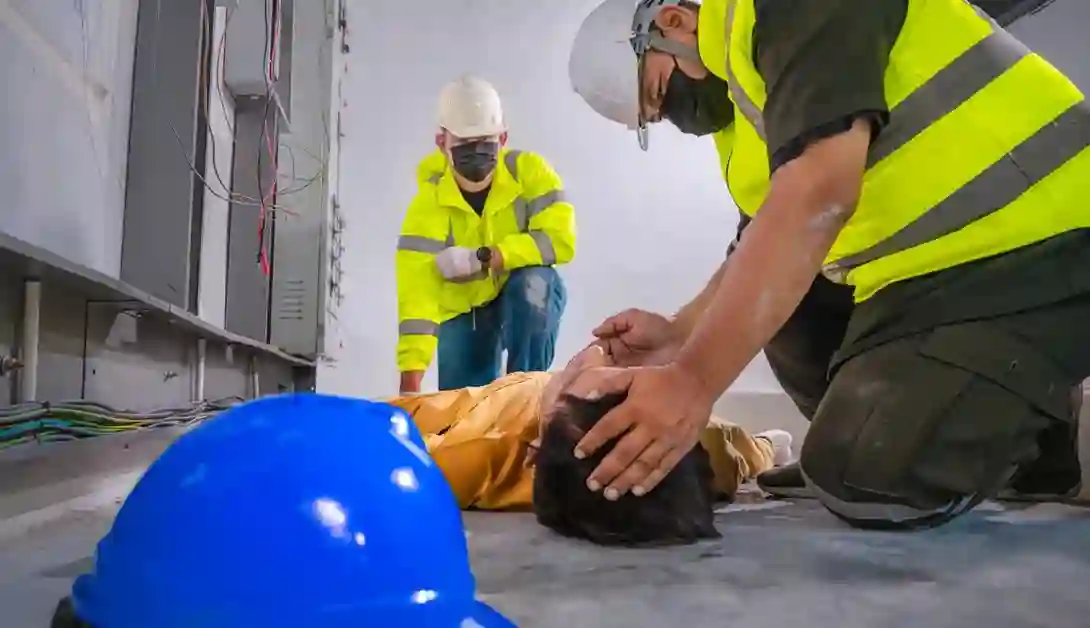In the modern workplace, the importance of being prepared for emergencies cannot be overstated. An integral component of this preparedness is the presence of trained on-site first responders. These individuals are the frontline of defense in the crucial moments following a workplace incident, capable of providing vital assistance before professional medical help arrives. This article explores the significance, structure, and impact of an on-site first responder course tailored for workplace emergencies.
The Significance of On-Site First Responders in the Workplace
On-site first responders play a critical role in managing workplace emergencies. They provide immediate care, which can be life-saving in instances of serious injury or health crisis. Their swift action can significantly reduce the severity of injuries, potentially saving lives and minimizing the impact of the emergency on both the individual and the organization.
Key Components of an On-Site First Responder Course
- Basic Life Support (BLS) and CPR: Training in CPR and the use of Automated External Defibrillators (AEDs) is foundational. Responders learn how to address cardiac and respiratory emergencies effectively.
- Injury Assessment: First responders are trained to assess injuries quickly and accurately, determining the best course of action in a crisis.
- Emergency Medical Techniques: This includes handling bleeding, shock, burns, fractures, and spinal injuries, among other conditions.
- Handling Hazardous Materials: In workplaces where hazardous materials are present, specific training is required to handle such emergencies safely.
- Crisis Management Skills: Responders are equipped with skills to manage the scene, including crowd control, communication with emergency services, and documentation of the incident.
- Mental Health First Aid: Recognizing and providing initial help to someone experiencing a mental health crisis is also a critical skill.
Structure and Delivery of the Course
The on-site first responder course is typically structured to be comprehensive yet adaptable to specific workplace environments. It involves a mix of theoretical learning and practical, hands-on training. Simulations and drills are crucial components, as they prepare responders for real-life scenarios. The course is often delivered by experienced professionals in the field of emergency medicine or occupational health and safety.
Challenges in Implementing the Course
- Resource Allocation: Providing comprehensive training can be resource-intensive in terms of time and finances.
- Participant Engagement: Maintaining high levels of engagement and participation throughout the training can be challenging.
- Regular Updates and Refresher Training: Keeping the training updated with the latest first aid and emergency response protocols requires ongoing commitment.
- Customization Needs: Adapting the course to suit specific workplace hazards and environments is crucial for its effectiveness.
Impact on Workplace Safety and Culture
- Improved Emergency Preparedness: Trained on-site first responders enhance the organization’s overall ability to manage emergencies effectively.
- Reduced Incident Response Time: Immediate on-site response can significantly reduce the time between the occurrence of an incident and initial medical intervention.
- Enhanced Employee Well-being: Knowing that trained colleagues are ready to respond in emergencies can significantly boost employee morale and create a more supportive workplace environment.
- Compliance with Health and Safety Regulations: Many jurisdictions require workplaces to have a certain number of trained first aiders or responders on site.
Best Practices for Effective Training
- Regular Drills and Scenario-Based Training: Conducting regular drills ensures that first responders remain familiar with emergency procedures and equipment.
- Feedback and Continuous Improvement: Post-training feedback sessions help in identifying areas for improvement and updating training protocols accordingly.
- Inclusive and Diverse Training: Ensuring the training is accessible and relevant to a diverse workforce is critical for its effectiveness.
- Integrating Technology: Utilizing technology, like virtual reality simulations, can enhance the learning experience.
The Role of Leadership in Supporting First Responder Training
Strong leadership support is key to the success of the on-site first responder program. Leaders should advocate for the importance of the training, provide necessary resources, and encourage employee participation. Recognizing and appreciating the efforts of those who undertake the training further reinforces its value.
Conclusion
The implementation of an on-site first responder course in the workplace is an invaluable step towards ensuring a safe and prepared working environment. These trained individuals are not just employees; they are vital assets in any emergency situation, capable of making a significant difference in the outcomes of workplace incidents. Their presence reflects an organization’s commitment to safety and well-being, not just in compliance with regulations but as a core value. As workplaces continue to evolve, the role of on-site first responders will remain crucial in fostering a culture of safety, responsiveness, and mutual care.




